From Trade to Territory Class 8 Questions and Answers History Chapter 2
History Class 8 Chapter 2 NCERT Textbook Questions and Answers
Question 1.
You are living in England in the late eighteenth or early nineteenth century. How would you have reacted to the stories of British conquests? Remember that you would have read about the immense fortunes that many of the officials were making.
Answer:
I would feel sad and if I would have the authority, I would have complained to the Queen to stop such conquests and allow the people of their religions to live freely without any hindrance. After all every human beings, either Black or White, rich or poor have equals rights to live.
If I would have read about the immense fortunes that many of the officials were making, I would suggest to impeach them and return their illegal wealth to the countries from where they had acquired.
Question 2.
Match the following :
| Diwani | Tipu Sultan |
| ‘Tiger of Mysore’ | Right to collect land revenue |
| Faujdari adalat | Sepoy |
| Rani Channamma | Criminal court |
| Sipahi | Led an anti-British movement in Kitoor. |
Answer:
| Diwani | Right to collect land revenue |
| ‘Tiger of Mysore’ | Tipu Sultan |
| Faujdari adalat | Criminal court |
| Rani Channamma | Led an anti-British movement in Kitoor |
| Sipahi | Sepoy |
Question 3.
Fill in the blanks :
(a) The British conquest of Bengal began with the battle of …………………….
(b) Haider Ali and Tipu Sultan were the rulers of …………………….
(c) Dalhousie implemented the doctrine of …………………….
(d) Maratha kingdoms were located mainly in the ……………………. part of India.
Answer:
(a) Plassey
(b) Mysore
(c) Lapse
(d) South-west
Question 4.
State whether true or false :
(a) The Mughal empire became stronger in the eighteenth century.
(b) The English East India Company was the only European company that traded with India.
(c) Maharaja Ranjit Singh was the ruler of Punjab.
(d) The British did not introduce administrative changes in the territories they conquered.
Answer:
(a) False
(b) False
(c) True
(d) False.
Question 5.
What attracted European trading companies to India?
Answer:
During that time there was a great demand of Indian goods in European countries such as cotton and silk, Pepper, cardamom, cloves and cinnamom too were in great demand. These things could be purchased on low prices and could be sold at very high prices in the European markets. The companies in trade could gain a lot of profit. This attracted the Europeans trading companies to trade in India.
Question 6.
What were the areas of conflict between the Bengal nawabs and the East India Company?
Answer:
(a) The company tried continuously to press for more and more concessions and manipulate enlisting privileges. For instance Aurangzeb’s farman had granted only the company the right to trade duty free.
(b) The officials of the company, who were carrying a private trade on the side, were expected to pay duty. However, these officials refused to pay, causing an enormous loss of revenue for Bengal.
(c) The conflict between the company and the nawabs of Bengal intensified, during the early eighteenth century. After the death of Aurangzeb, the Bengal nawabs asserted their power and autonomy. Murshid Quli Khan was followed by Alivardi Khan and then Sirajuddaulah as the nawab of Bengal. These nawabs refused to grant the Company concessions, demanded large tributes for the company’s right to trade, denied it any right to mint coins, and even stopped it from extending its fortifications.
(d) Accusing the company of deceit, they claimed that the company was depriving the Bengal government of huge amounts of revenue and undermining the authority of the nawab.
(e) On its part, the company declared that the unjust demands of the local officials were ruining the trade of the company, and trade could flourish only if the duties were removed. It was also convinced that to expand trade it had to enlarge its settlements, buy up villages, and rebuild its forts. The conflicts led to confrontations and finally culminated in the famous Battle of Plassey.
Question 7.
How did the assumption of Diwani benefit the East India Company?
Answer:
In 1765, the Mughal emperor appointed the company as the Diwan of the provinces of Bengal. The Diwani allowed the company to use the vast revenue resources of Bengal. This was a boon for the company. From the early eighteenth century its trade with India had expanded. But it had to buy most of the goods in India with gold and silver imported from Britain. During this time Britain had no goods to sell in India. The outflow of gold from Britain slowed after the battle of Plassey, and entirely stopped after the assumption of Diwani. Now revenues from India could finance company expenses. These revenues were used to purchase cotton and silk textiles in India, maintain company troops, and also meet the cost of building the company fort and offices at Calcutta.
Question 8.
Explain the system of ‘subsidiary alliance’.
Answer:
The Company forced the states into a ‘subsidiary alliance’. According to the terms of this alliance, Indian rulers were not allowed to have their independent armed forces. They were to be protected by the company, but had to pay for the ‘subsidiary forces’ that the company was supposed to maintain for the purpose of this protection. If the Indian rulers failed to make the payment, then part of their territory was taken away as penalty.
Question 9.
In what way was the administration of the company different from the Indian rulers?
Answer:
(a) One of many important figures who played a significant role in the expansive of company power was Warren Hastings (Governor-General from 1773 to 1785). During that time, British territories were broadly divided into administrative units called Presidencies. There were three Presidencies : Bengal, Madras, and Bombay. Each was ruled by a Governor. The supreme head of the administration was the Governor-General.
(b) From 1772 a new system of justice was established. Each district had two courts-a criminal court (faujdari adalat) and a civil court (diwani adalat). Maulvis and Hindu pandits interpreted Indian laws for the European district collectors who presided over civil courts. The criminal courts were still under a qazi and mufti but under the supervision of the collectors.
(c) A major problem occurred during that time was that the Brahman pandits gave different interpretations of local laws based on different schools of the dharma-shastra. To bring about uniformity, eleven pandits were asked to compile a digest in 1775 of Hindu laws. N.B. Halhad translated this digest into English. A code of Muslim laws was also compiled for the benefit of European judges, in 1778. A new Supreme Court was established, under the Regulating Act of 1773, A court of appeal, the Sadar Nizamat Adalat was also set up at Calcutta.
(d) The main figure in an Indian district was the collector. His main job was to collect revenue and taxes and maintain law and order in his district with the help of judges, police officers, and darogas.
Question 10.
Describe the changes that occurred in the composition of the Company’s army.
Answer:
The colonial rule in India brought in some new ideas of administration and reform but its power rested on its military strength. Several changes occurred in the composition of the company’s army :
These are as follows :
(a) In the eighteenth century, a change occurred when Mughal successor states like Awadh and Benaras started recruiting peasants into their armies and training them as professional soldiers. The East-India Company also adopted the same method when it began recruitment for its own army, and called them sepoy army.
(b) The cavalry requirements of the company’s army declined as warfare technology changed from the 1820s. This was because the British Empire was fighting in Burma, Afghanistan, and Egypt where soldiers were armed with muskets and matchlocks. The soldiers of the company’s army had to keep pace with changing military requirements and its infantry regiments now became more important,
(c) The British began to develop a uniform military culture in the early nineteenth century. Soldiers were given European-style training, drill, and discipline that regulated their life far more than before. Often this created problems since caste and community feelings were ignored in building a force of professional soldiers.
Question 11.
After the British conquest of Bengal, Calcutta grew from a small village to a big city. Find out about the culture, architecture and the life of Europeans and Indians of the city during the colonial period.
Answer:
Calcutta grew from a small village to a big city after the British conquest of Bengal. The cultural architecture and the life of the Europeans and Indian’s of the city during the colonial period was as follows :
(a) From 1750 to 1805 :
During this period the planning of Calcutta was carried by different Governor-Generals. This city was very important from many points of view. It has had a big port. After the Battle of Plassey, Civil Lines area was developed for the Europeans. Very rich Indian merchants and traders also developed huge building.
(b) Planning of Calcutta after Lord Wellesley :
After Wellesley the work of town planning was carried on by Lottery Committee (1817) with the help of the government.
(c) Role of Health and Town Planning of Calcutta :
The threat of epidemic gave further implies to town planning. After some years some other diseases spread in this area, the government took some measures for the prevention of the diseases.
(d) Frequent fires also led to strick building regulations. For example, thatched huts were banned in 1836 because these caught fire easily. For thatched roofs, tiled roofs were made essential.
Question 12.
Collect pictures, stories, poems and information about any of the following: the Rani of Jhansi, Mahadji Sindhia, Haider Ali, Maharaja Ranjit Singh, Lord Dalhousie or any other contemporary ruler of your region.
Answer:
The Rani of Jhansi: Collect information and photographs
Hints:
- Early childhood
- Early marriage
- Death of husband
- Adopted son
- Fight with British
- Died fighting with the British.
- History would always remember her.
1. Rani Of Jhansi:
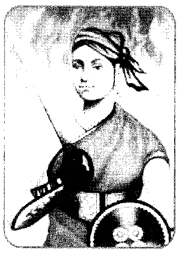
Lakshmibai was born probably on 19 November 1828 in the holy town of Varanasi in a Marathi brahmin family. Her father was Moropant Tambe. Her father worked for a court of Peshwa of Bithoor district. Peshwa brought Manikarnika up like his own daughter. The Peshwa called her “Chhabili”, which means “playful”.
She was educated at home and was more independent in her childhood than others of her age; her studies included archery, horsemanship, and self-defense.
Rani Lakshmibai was accustomed to ride on horseback accompanied by a small escort between the palace and the temple. The Rani Mahal, the place of Rani Lakshmibai, has now been converted into a museum. She died, fighting British Army bravely, to save her state Jhansi.
2. Mahadaji Shindhia
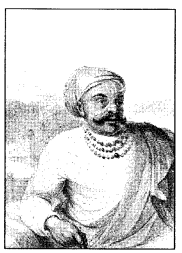
Mahadaji Shinde (1730-1794 A.D.) also spelled as Mahadji Scindia or Mahadaji Scindia, was a Maratha ruler of the state of Gwalior in central India.
Mahadaji was instrumental in resurrecting Maratha power in North India after the Third Battle of Panipat in 1761 and rose to become a trusted lieutenant of the
Peshwa, leader of the Maratha Empire. During his reign, Gwalior became the leading state in the Maratha Empire and one of the foremost military powers in India.
He accompanied Shah Alarm II (Mughal Badshah) in 1771 to Delhi in order to restore the Mughals in Delhi. The Marathas were practically at that time ruling Delhi.
He annihilated the power of Jats of Mathura and during 1772-73 and destroyed the power of Pashtun Rohillas in Rohilkhand and captured Najibabad. His role during the First Anglo Maratha War was greatest from the Maratha side since he humbled the British in Central India, single-handed, which resulted in the Treaty of Salbai in 1782, where he mediated between the Peshwa and the British.
3. Hyder Ali Of Mysore
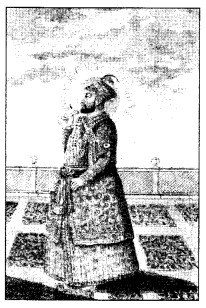
Hyder Ali (1721-1782) was the sultan and de facto ruler of the Kingdom of Mysore in southern India. Born Hyder Naik, he distinguished himself militarily, eventually drawing the attention of Mysore’s rulers. Rising from the post of Dalavayi (commander-in-chief) to Krishnaraja Wodeyar II, he came to dominate the titular monarch and the Mysore government. He became the de facto ruler of Mysore as Sarvadhikari (Chief Minister) by 1761. He offered strong anti-colonial resistance against the military advances of the British East’India Company during the First and Second Anglo Mysore Wars and he was the innovator of military use of the ‘iron-cased Mysorean rockets.
4. Maharaja Ranjit Singh
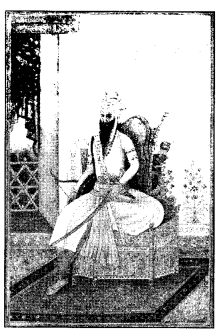
Ranjit Singh was born to Sardar Maha Singh and Raj Kaur on 13 November 1780, in Gujranwala, Punjab (now in Pakistan). As a child, he suffered from smallpox which resulted in the loss of one eye. At the time, much of Punjab was ruled by the Sikhs under a Confederate Sarbat Khalsa system, which had divided the territory among factions known as misls Ranjit Singh’s father was the commander of the Sukerchakia Misl and controlled a territory in west Punjab based around his headquarter at Gujranwala.
In 1799, Ranjit Singh captured Lahore (now in Pakistan) from the Bhangi Misl and later made it his capital. This was the first important step in his rise to power. In the following years, he brought the whole of central Punjab from the Sutlej to the Jhelum under his sway. This area includes north of Satluj (Jullundhar, Amritsar, Pathankot, etc.); and Lahore, Multan, etc. of Pakistan.
5. Lord Dalhousie
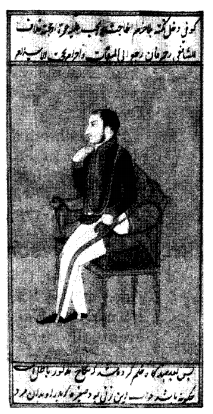
Governor-general of India (1848 to 1856): Lord Dalhousie is one the most negatively remembered personality in the rule of East India Company. He ruled India with his full efficiency from 1848 to 1856 A.D. In India, he was famous for various negative and positive reasons.
Positive:
- Starting of Railway in 1853 A.D. for the first time, between Bombay to Thane.
- Starting of postal and telegraph services in India.
- Starting of widow remarriage in 1856 A.D.
- Completion of Ganges Canal.
- Reform in Indian civil services.
Negative:
- East India Company captured the princely state of Punjab in 1849 A.D.
- Second Anglo-Burmese War.
- The doctrine of Lapse (Most Controversial).
- The annexation of Awadh.
Activities
Activity 1
Imagine that you have come across two old newspapers reporting on the Battle of Seringapatam and the death of Tipu Sultan. One is a British paper and the other is from Mysore. Write the headline for each of the two newspapers.
Answer:
English Newespaper : Main English Enemy Massacared Maratha Newspaper : End of Tiger of Mysore
Activity 2
Imagine that you are a nawab’s nephew and have been brought up thinking that you will one day be king. Now you find that this will not be allowed by the British because of the new Doctrine of Lapse. What will be your feelings? What will you plan to do so that you can inherit the crown?
Answer:
I will boil with anger. I will organise a meeting with all my relatives, friends and the army. I will attack the English with all my might and free my kingdom from them.